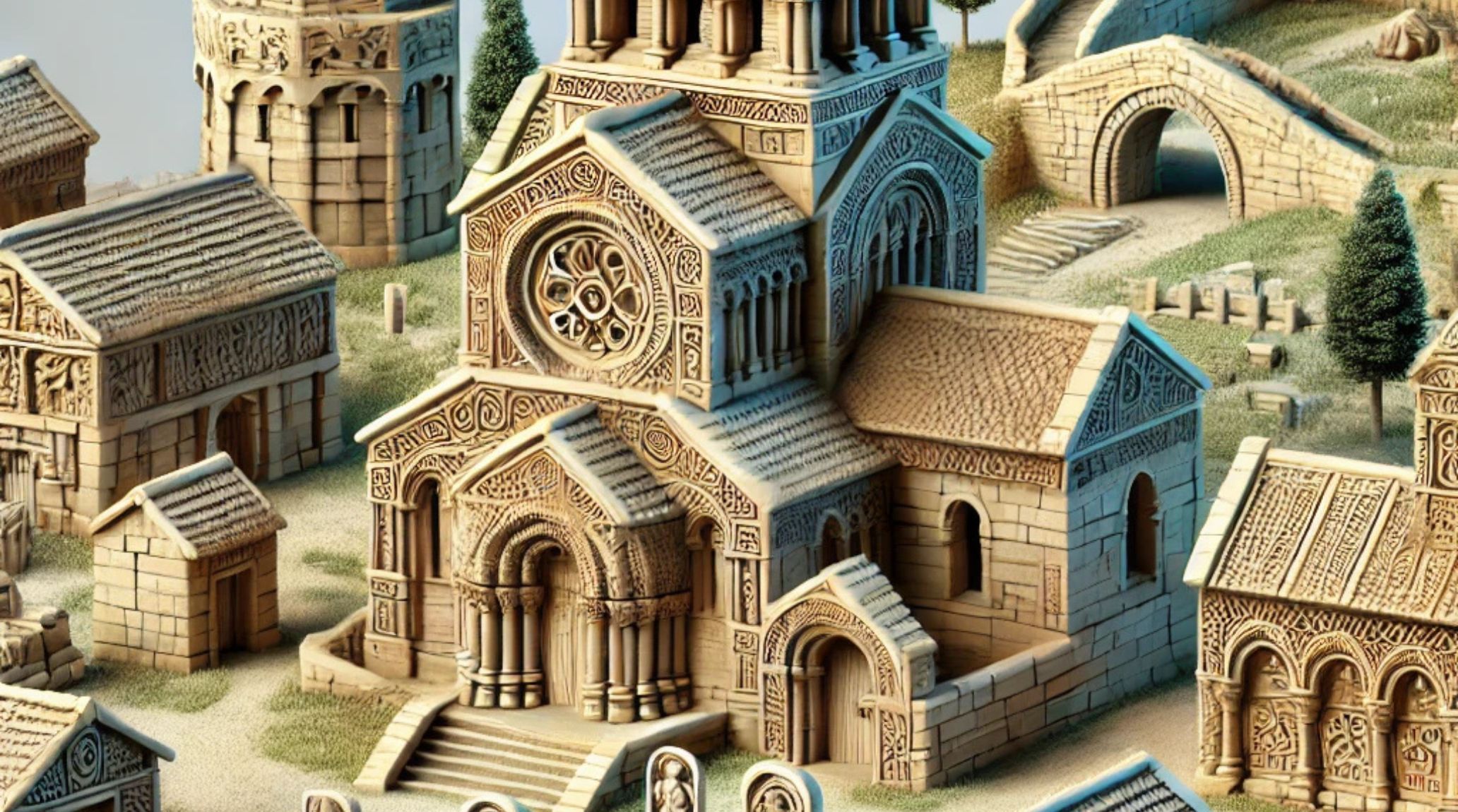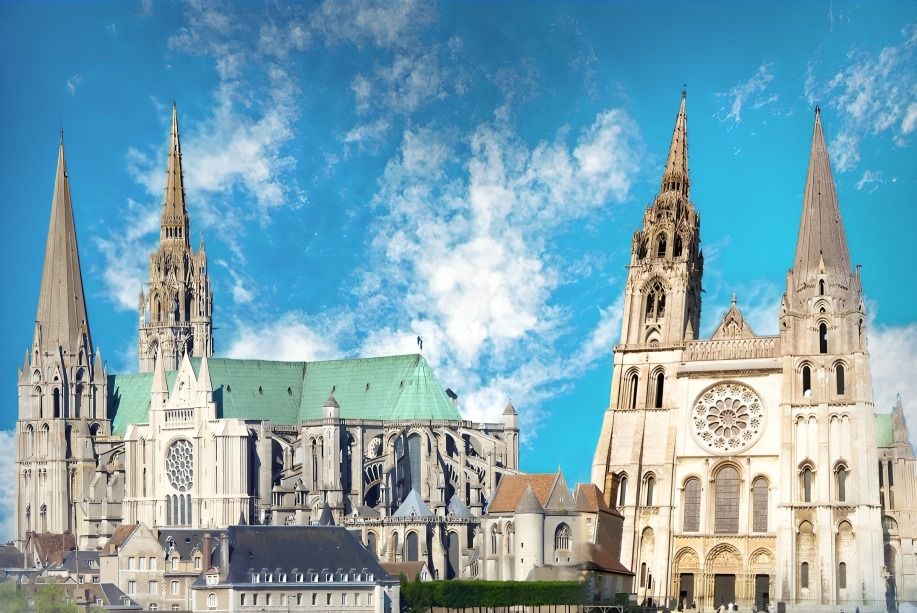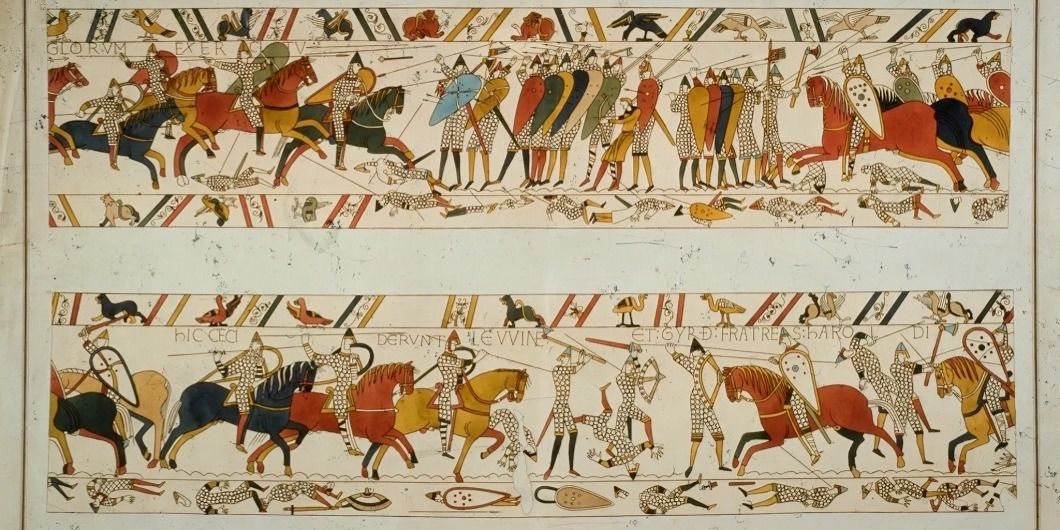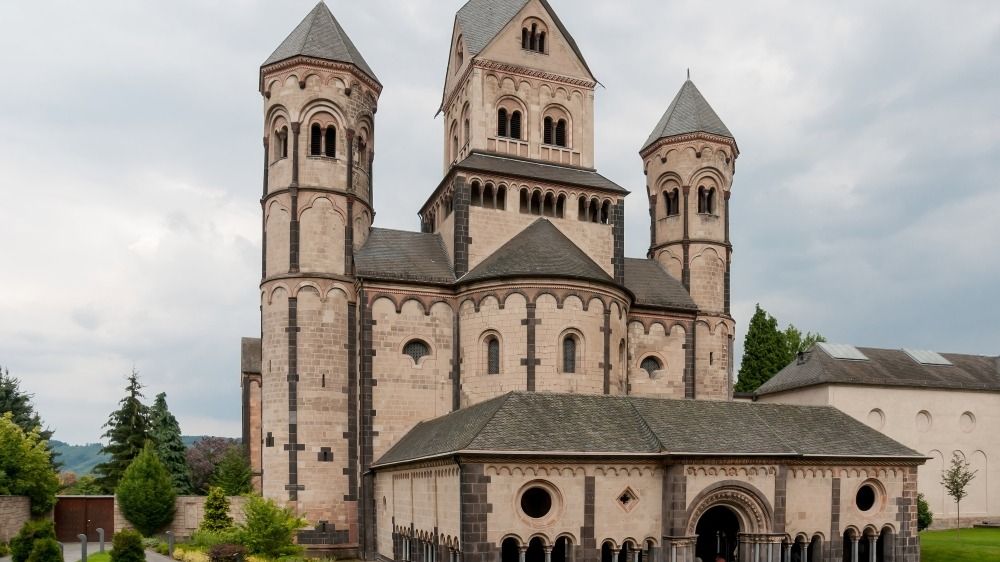
“
From the towering spires of Gothic cathedrals to the detailed illuminations found in medieval manuscripts, this journey will explore the rich and diverse artistic expressions that defined the Middle Ages. We'll uncover the craftsmanship behind architectural marvels like flying buttresses and stained glass windows, along with the delicate artistry of manuscript illuminations that brought religious texts to life. Through this exploration, we’ll gain insight into how these masterpieces not only shaped the cultural and spiritual landscape of medieval Europe but also left a lasting impact on art, architecture, and society across the centuries. Join us in unraveling these fascinating stories!1
”
Romanesque architecture, prevalent from the 6th to the 12th century, features thick walls, rounded arches, and barrel vaults, effectively merging Roman and Byzantine influences to emphasize durability and strength.1
Emerging in the 12th century, Gothic architecture introduced pointed arches, ribbed vaults, and flying buttresses. These innovations enabled the construction of taller buildings filled with beautiful stained glass windows that illuminated interiors.2
Medieval cathedrals served both as worship spaces and symbols of community pride, adorned with intricate stained glass that depicted biblical stories, enriching the spiritual experience for congregants and visitors alike.3

Chartres Cathedral in France is renowned for its stunning stained glass windows and harmonious proportions, featuring a labyrinth that symbolizes the artistic and spiritual achievements of medieval architecture.
Flying buttresses allowed Gothic cathedrals to incorporate larger windows and soaring interiors, transferring roof weight to external supports and creating expansive worship areas filled with light and color.4
Gargoyles served both decorative and practical purposes in medieval architecture, expertly designed to divert rainwater while often being sculpted into fantastical or grotesque forms that captivated onlookers.5
Medieval stained glass windows were vibrant works of art that illuminated church interiors with colorful biblical scenes, integral to the spiritual and visual experience of the medieval faithful attending services.6

The Bayeux Tapestry, an 11th-century embroidered cloth nearly 70 meters long, vividly narrates the Norman conquest of England, providing a detailed visual account of medieval history through elaborate and intricate embroidery.
Medieval manuscripts were adorned with stunning illuminations and miniature paintings, showcasing the exceptional skill of artists and adding both aesthetic and spiritual value to the treasured books of the time.7
The Book of Kells, dating to the 9th century, is a masterpiece of Irish illuminated manuscript art, captivating viewers with its elaborate decorations and vibrant colors that reflect a high point of medieval craftsmanship.8
Romanesque churches featured sculptural decorations depicting biblical stories, saints, and mythical creatures, serving as visual narratives and educational symbols of faith for worshippers entering sacred spaces.9
Castles were fortified structures that served as military strongholds and residences for nobility, featuring defensive elements like moats and drawbridges that were central to the feudal system and power dynamics of medieval society.10
Early medieval fortifications, such as motte-and-bailey castles, included a raised earthwork (the motte) and a surrounding courtyard (the bailey), providing effective defense and a commanding view of the surrounding landscape.11
Crusader castles in the Holy Land combined European and Middle Eastern architectural styles, adapting to local terrain and defensive needs to create a unique fusion that reflected the blending of cultures.12
Medieval heraldry used coats of arms and symbols to identify noble families and knights, playing a crucial role in art, identity, and social hierarchy during the medieval period.13

Romanesque church portals featured sculpted tympanums and archivolts adorned with biblical scenes, welcoming worshippers into sacred spaces and providing visual representations of important religious narratives and teachings.
Medieval gardens, such as those at Alhambra in Spain, blended Islamic and Christian influences, featuring serene water features, lush plants, and artistic layouts that provided tranquil spaces for relaxation and contemplation.14
Cistercian monks favored simple and austere architecture in their monastic buildings, reflecting values of humility and spiritual focus, contrasting sharply with more ornate religious structures that emphasized wealth and power.15
Medieval towns evolved around bustling marketplaces and guild halls, characterized by timber-framed houses and narrow streets that reflected the vibrant social and economic life of the period.16
Gothic cathedrals were crowned with towering spires that symbolized spiritual aspiration and divine presence, serving as architectural landmarks that expressed the era's deep religious devotion and ambition.17


